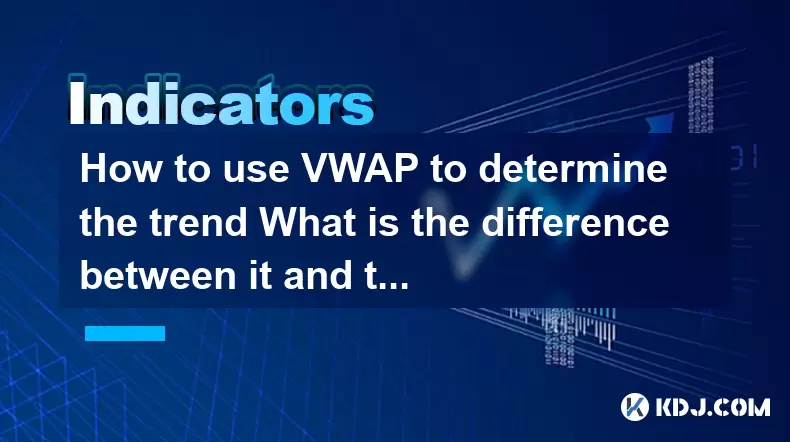-
 Bitcoin
Bitcoin $117900
-2.85% -
 Ethereum
Ethereum $4559
-2.84% -
 XRP
XRP $3.068
-5.67% -
 Tether USDt
Tether USDt $1.000
0.02% -
 BNB
BNB $836.7
-0.81% -
 Solana
Solana $193.2
-2.38% -
 USDC
USDC $0.9998
0.00% -
 TRON
TRON $0.3591
-0.32% -
 Dogecoin
Dogecoin $0.2238
-7.20% -
 Cardano
Cardano $0.9090
4.71% -
 Chainlink
Chainlink $22.55
-4.36% -
 Hyperliquid
Hyperliquid $44.78
-2.41% -
 Sui
Sui $3.771
-4.47% -
 Stellar
Stellar $0.4199
-6.18% -
 Bitcoin Cash
Bitcoin Cash $587.8
-5.02% -
 Ethena USDe
Ethena USDe $1.001
-0.01% -
 Hedera
Hedera $0.2493
-5.06% -
 Avalanche
Avalanche $23.66
-5.54% -
 Litecoin
Litecoin $121.0
-6.80% -
 Toncoin
Toncoin $3.383
-2.39% -
 UNUS SED LEO
UNUS SED LEO $9.287
0.47% -
 Shiba Inu
Shiba Inu $0.00001286
-6.48% -
 Uniswap
Uniswap $10.94
-9.06% -
 Polkadot
Polkadot $3.979
-5.53% -
 OKB
OKB $96.24
-3.88% -
 Dai
Dai $0.9997
0.00% -
 Bitget Token
Bitget Token $4.570
-4.16% -
 Cronos
Cronos $0.1510
-8.87% -
 Ethena
Ethena $0.7251
-6.96% -
 Aave
Aave $310.8
-4.73%
How to use VWAP to determine the trend What is the difference between it and the moving average
VWAP, incorporating price and volume, offers a nuanced view of market trends in crypto trading, unlike the moving average which only considers price data.
May 22, 2025 at 12:56 pm

How to Use VWAP to Determine the Trend: What is the Difference Between It and the Moving Average?
Volume Weighted Average Price (VWAP) is a critical tool used by traders in the cryptocurrency market to gauge the trend and make informed trading decisions. Unlike the simple moving average, which solely considers price data, VWAP incorporates both price and volume, providing a more nuanced view of market dynamics. In this article, we will explore how to use VWAP to determine trends in the crypto market and highlight the key differences between VWAP and the moving average.
Understanding VWAP
VWAP is calculated by taking the total dollar amount of all transactions and dividing it by the total volume of transactions over a specific time period. The formula for VWAP is:
[ \text{VWAP} = \frac{\sum (P_i \times V_i)}{\sum V_i} ]
Where ( P_i ) is the price of each transaction and ( V_i ) is the volume of each transaction.
In the cryptocurrency market, VWAP helps traders understand whether they are getting a favorable price compared to the average price at which the asset has traded throughout the day. If the current price is above the VWAP, it might be considered expensive, and if it's below, it might be considered a bargain.
Using VWAP to Determine Trends
To effectively use VWAP for trend determination, traders need to follow a few key steps:
Identify the VWAP Line: On your trading chart, the VWAP line is typically represented as a single line that moves with the price and volume data over the chosen time period. This line serves as a benchmark for the average price at which the asset has traded.
Compare Current Price to VWAP: If the current price of the cryptocurrency is above the VWAP, it suggests that the market is bullish, and the asset is trading at a premium. Conversely, if the price is below the VWAP, it indicates a bearish market, and the asset is trading at a discount.
Watch for Crossovers: A common strategy is to watch for the price crossing the VWAP line. When the price crosses above the VWAP, it can signal the start of an uptrend, and when it crosses below, it can indicate the beginning of a downtrend.
Volume Confirmation: Since VWAP takes volume into account, it's crucial to confirm any trend signals with volume data. A strong trend should be accompanied by high trading volume, adding credibility to the VWAP signal.
Practical Application of VWAP in Trading
To apply VWAP in your trading strategy, consider the following steps:
Choose Your Time Frame: Decide on the time frame for your VWAP calculation. Common choices in the crypto market include intraday, daily, or weekly periods, depending on your trading style.
Set Up Your Chart: Use a trading platform that supports VWAP indicators. Most professional trading platforms will have this feature built-in. Add the VWAP indicator to your chart for the chosen time frame.
Monitor Price and VWAP: Keep a close eye on the price in relation to the VWAP line. Look for opportunities where the price is significantly above or below the VWAP to make buy or sell decisions.
Execute Trades Based on Signals: When you see a crossover or a significant deviation from the VWAP, consider entering or exiting a trade. For instance, buying when the price crosses above the VWAP and selling when it crosses below can be an effective strategy.
Differences Between VWAP and Moving Average
While both VWAP and moving averages are used to identify trends, there are several key differences between them:
Incorporation of Volume: The most significant difference is that VWAP includes volume data, whereas the moving average does not. This makes VWAP a more comprehensive indicator of market activity.
Calculation Method: The moving average is calculated by taking the average of the closing prices over a specified period. In contrast, VWAP uses the price and volume of each transaction, resulting in a more dynamic measure.
Usage in Trading: Moving averages are often used to identify support and resistance levels, while VWAP is typically used to gauge the fairness of the current price and to execute trades based on deviations from the average.
Sensitivity to Market Changes: Because VWAP includes volume, it can be more sensitive to sudden changes in market activity. This can be beneficial for traders looking to capitalize on short-term trends, whereas moving averages might be better suited for identifying longer-term trends.
Limitations of VWAP
While VWAP is a powerful tool, it has its limitations that traders should be aware of:
Reset Daily: VWAP is typically reset at the start of each trading day, which means it's less useful for traders looking at longer-term trends. If you're interested in multi-day trends, you might need to use a cumulative VWAP or another indicator.
Volume Dependency: The effectiveness of VWAP heavily relies on volume data. In markets with low volume, VWAP may not provide reliable signals.
Not a Standalone Indicator: VWAP should not be used in isolation. Combining it with other technical indicators and fundamental analysis can provide a more robust trading strategy.
Implementing VWAP in a Crypto Trading Strategy
To effectively integrate VWAP into your crypto trading strategy, consider the following approach:
Combine with Other Indicators: Use VWAP alongside other indicators such as the Relative Strength Index (RSI) or the Moving Average Convergence Divergence (MACD) to confirm trend signals.
Backtest Your Strategy: Before applying VWAP in live trading, backtest your strategy using historical data to see how it would have performed. This can help you refine your approach and set realistic expectations.
Stay Informed: Keep up with market news and events that could affect trading volume and price. Understanding the broader context can enhance your interpretation of VWAP signals.
Risk Management: Always use proper risk management techniques. Even with a powerful tool like VWAP, losses can occur. Set stop-loss orders and only trade with capital you can afford to lose.
Frequently Asked Questions
Q: Can VWAP be used for long-term trend analysis in the crypto market?
A: While VWAP is typically reset daily and is best suited for intraday trading, you can use a cumulative VWAP over longer periods to analyze long-term trends. However, it's important to combine it with other indicators to get a comprehensive view.
Q: How does VWAP help in identifying potential entry and exit points for trades?
A: VWAP helps identify entry and exit points by signaling when the price is significantly above or below the average price. Traders can buy when the price crosses above the VWAP and sell when it crosses below, using these crossovers as potential entry and exit signals.
Q: Is VWAP more effective in volatile markets like cryptocurrency?
A: VWAP can be particularly effective in volatile markets because it accounts for both price and volume, providing a more accurate reflection of market sentiment. However, its effectiveness also depends on the trading volume, which can be erratic in crypto markets.
Q: Can VWAP be used in conjunction with algorithmic trading strategies?
A: Yes, VWAP is often used in algorithmic trading strategies, especially for executing large orders without significantly impacting the market price. Algorithms can use VWAP to determine optimal entry and exit points based on the average price and volume data.
Disclaimer:info@kdj.com
The information provided is not trading advice. kdj.com does not assume any responsibility for any investments made based on the information provided in this article. Cryptocurrencies are highly volatile and it is highly recommended that you invest with caution after thorough research!
If you believe that the content used on this website infringes your copyright, please contact us immediately (info@kdj.com) and we will delete it promptly.
- Kazakhstan's Crypto Leap: Bitcoin ETF and Central Asia's Digital Finance Future
- 2025-08-13 12:45:19
- BlockDAG Presale Blazes Past $371M: Fundraising Frenzy Fuels Crypto Sensation
- 2025-08-13 13:05:21
- Meme Coins: Chasing the 2025 Surge – Which Will Moonshot?
- 2025-08-13 10:25:23
- Bitcoin's Wild Ride: Rally, Pullback, and What's Next
- 2025-08-13 10:25:23
- Bitcoin, Bitmax, and Institutional Demand: A New Era of Crypto Investment
- 2025-08-13 10:45:12
- Solana, ROAM, and Airdrops: What's the Buzz in 2025?
- 2025-08-13 11:35:13
Related knowledge

What does it mean when the +DI and -DI cross frequently in the DMI indicator but the ADX is flattening?
Aug 11,2025 at 03:15am
Understanding the DMI Indicator ComponentsThe Directional Movement Index (DMI) is a technical analysis tool composed of three lines: the +DI (Positive...

What does the sudden appearance of a "dark cloud cover" candlestick pattern during an uptrend indicate?
Aug 13,2025 at 11:35am
Understanding the 'Dark Cloud Cover' Candlestick PatternThe dark cloud cover is a bearish reversal pattern in technical analysis that typically appear...

What does it mean when the moving average, MACD, and RSI all send buy signals simultaneously?
Aug 11,2025 at 01:42pm
Understanding the Convergence of Technical IndicatorsWhen the moving average, MACD, and RSI all generate buy signals at the same time, traders interpr...

What does it mean when both the KDJ indicator and the RSI show overbought signals simultaneously?
Aug 13,2025 at 11:35am
Understanding the KDJ Indicator in Cryptocurrency TradingThe KDJ indicator is a momentum oscillator derived from the Stochastic Oscillator, widely use...

What does it mean when the price is trading above the SAR indicator but the red dots are densely packed?
Aug 09,2025 at 11:49pm
Understanding the SAR Indicator and Its Visual SignalsThe SAR (Parabolic Stop and Reverse) indicator is a technical analysis tool used primarily to de...

What does it mean when the candlestick chart forms a "Morning Star" but trading volume is sluggish?
Aug 12,2025 at 06:28pm
Understanding the Morning Star Candlestick PatternThe Morning Star is a three-candle bullish reversal pattern commonly observed in cryptocurrency pric...

What does it mean when the +DI and -DI cross frequently in the DMI indicator but the ADX is flattening?
Aug 11,2025 at 03:15am
Understanding the DMI Indicator ComponentsThe Directional Movement Index (DMI) is a technical analysis tool composed of three lines: the +DI (Positive...

What does the sudden appearance of a "dark cloud cover" candlestick pattern during an uptrend indicate?
Aug 13,2025 at 11:35am
Understanding the 'Dark Cloud Cover' Candlestick PatternThe dark cloud cover is a bearish reversal pattern in technical analysis that typically appear...

What does it mean when the moving average, MACD, and RSI all send buy signals simultaneously?
Aug 11,2025 at 01:42pm
Understanding the Convergence of Technical IndicatorsWhen the moving average, MACD, and RSI all generate buy signals at the same time, traders interpr...

What does it mean when both the KDJ indicator and the RSI show overbought signals simultaneously?
Aug 13,2025 at 11:35am
Understanding the KDJ Indicator in Cryptocurrency TradingThe KDJ indicator is a momentum oscillator derived from the Stochastic Oscillator, widely use...

What does it mean when the price is trading above the SAR indicator but the red dots are densely packed?
Aug 09,2025 at 11:49pm
Understanding the SAR Indicator and Its Visual SignalsThe SAR (Parabolic Stop and Reverse) indicator is a technical analysis tool used primarily to de...

What does it mean when the candlestick chart forms a "Morning Star" but trading volume is sluggish?
Aug 12,2025 at 06:28pm
Understanding the Morning Star Candlestick PatternThe Morning Star is a three-candle bullish reversal pattern commonly observed in cryptocurrency pric...
See all articles

























































































